
views
Lubricating a Jammed Lock
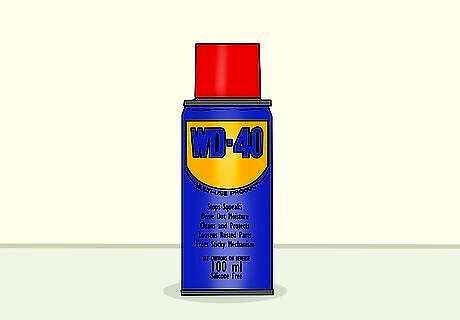
Use a penetrating catalyst or WD-40 to try lubricating jammed car locks. A penetrating catalyst is a type of lubricant that will also break up rust and grime that may be jamming the lock. WD-40 is an all-purpose lubricant that will also clean off the parts inside the lock and protect them against future corrosion and grime.Tip: If you can’t insert your key all the way into the keyhole, or if it is difficult to do so, this is a good indication that the lock may be jammed by rust or dirt. In this case, lubricating the lock through the keyhole can fix the problem and help prevent it from happening again in the future. You can buy a penetrating catalyst or WD-40 at a home improvement center, auto supply shop, or online. You can try this method on either a manual or an electronic car lock, as long as there is a keyhole.

Poke the tip of a flathead screwdriver into the keyhole to open it up. Place the tip of the screwdriver against the moveable metal piece that covers up the keyhole when there’s no key in it. Push the screwdriver in until this metal piece moves all the way out of the way so you can get lubricant into the keyhole. If you don’t have a flathead screwdriver, you can use any other thin metal object to open up the keyhole. Just make sure not to use anything breakable that could snap and get stuck in the lock.
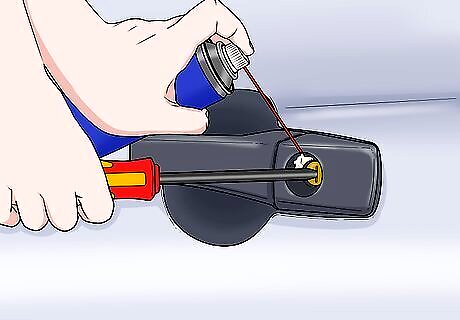
Spray your lubricant directly into the keyhole. Hold the can with the nozzle as close to the keyhole as possible. Press the cap down 4-5 times to spray a generous amount of lubricant into the keyhole. If you’re using WD-40, the can usually comes with a long skinny red straw that you can attach to the nozzle. You can stick this straw right into the keyhole to get the lubricant all the way inside.
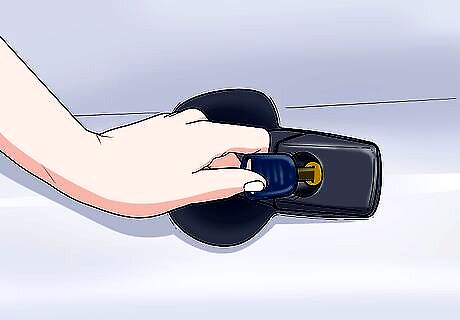
Stick the car key in the keyhole and wiggle it around to loosen the lock. Remove the tip of your flathead screwdriver from the keyhole and stick your car key in. Wiggle the key back and forth to loosen up the tumblers inside the lock, then try turning the key to unlock it. If the lock is still jammed, don’t try to force it open with your key. You might end up breaking the key off inside the lock and making the issue worse.
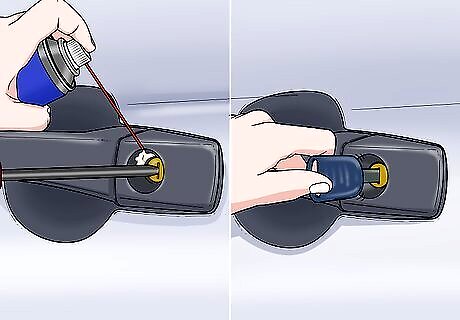
Repeat the process if the lock is still jammed. Remove your key from the lock and poke the tip of your flathead screwdriver in it. Spray 4-5 more squirts of lubricant into the lock, then try unlocking it with your key again. You can also try covering the key in lubricant and sliding it in and out of the lock a few times to loosen up the tumblers inside. If you still can’t unjam the lock after trying this process a few times, you might have a bigger issue. You will either need to access the locking mechanism from the inside to try and unjam it or get a locksmith to fix the problem.
Unjamming the Locking Mechanism
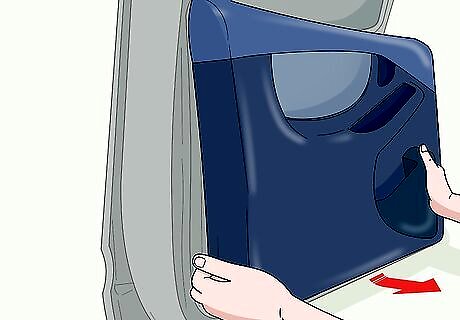
Remove the interior door handle or the entire door panel to access the lock. Use a Phillips-head screwdriver to remove the screw that holds the door handle plate in place and pry the plate off the door, if your car door has a removable interior handle. Take out all the screws and plastic clips that hold the door panel in place and pull the panel off the door, if you cannot remove just the door handle. The exact procedure for removing the interior door handle or door panel varies from car to car. However, the general concept is the same. Just locate all the hardware that holds the door handle plate or door panel in place and take it out, then pull the door handle or door panel off the door. If you have to remove the door panel, keep in mind that some doors have a sheet of sticky insulation that you also have to remove to make repairs. It will have to be replaced afterwards. Consider getting your lock professionally repaired if you aren’t comfortable doing this yourself. This method may work for either an electronic or a manual car lock.
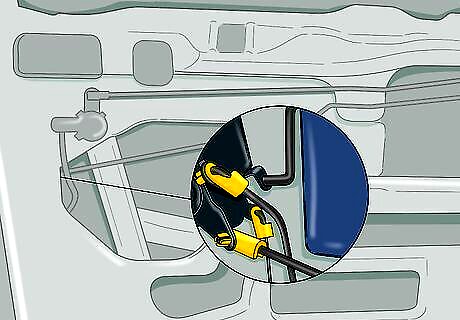
Locate the door lock mechanism directly underneath the door lock. Look for some type of metal plate attached to a rod right underneath the exposed door lock that moves up and down. This is the mechanism you will attempt to move to unjam your car lock. If you’re having difficulty seeing the mechanism, use a flashlight or the light on your phone to get a better look.
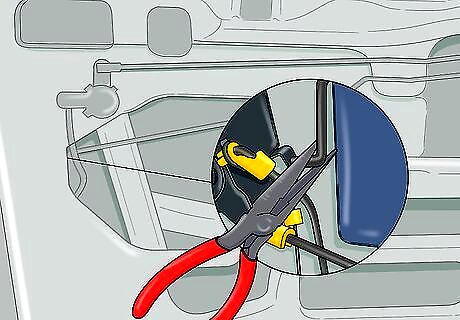
Grip the door mechanism’s rod with a pair of needle-nose pliers. Open up a pair of needle-nose pliers and grab the metal rod that attaches to the metal plate of the locking mechanism. This is the lever that moves the lock up and down.
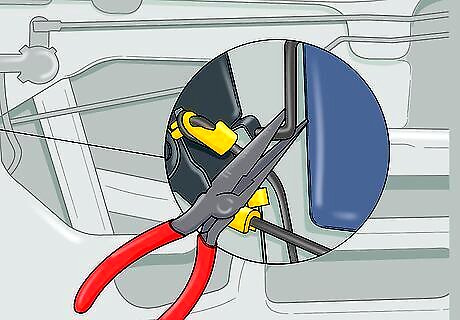
Move the rod up and down using the pliers to unjam the lock. Hold your pliers tightly and try to wiggle the locking mechanism’s rod up and down. Push it up to unlock the door and down to lock the door. Keep moving the rod up and down until the lock goes smoothly between locked and unlocked. If it’s hard to move the rod up and down and you can’t get the lock unjammed, try spraying the whole mechanism with some WD-40 to lubricate it.
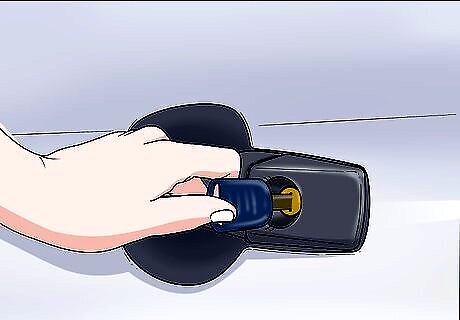
Test the lock out with your key and any electronic buttons. Stick your car key into the lock’s keyhole and try locking and unlocking the door a few times. Try using your car’s or key fob’s unlock and lock buttons, if you have an electronic locking mechanism in your car.Tip: If your physical key works fine, but you can’t unlock the lock using your electronic key fob or a button inside the car, you probably have an electronics problem. Take your car to a mechanic to get this checked out and fixed. If your lock doesn’t seem totally unjammed, but it feels like you're making progress, keep wiggling the mechanism back and forth using your needle-nose pliers until the locking and unlocking actions feel smooth. You can also try spraying some WD-40 on your key or into the keyhole to clean out, lubricate, and protect the lock against corrosion.
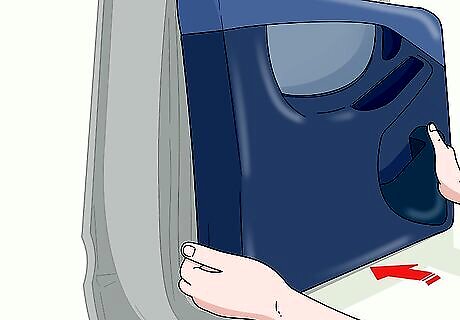
Replace the interior door handle or door panel. Snap the panel or handle back into place. Put all the screws back in and tighten them using your Phillips-head screwdriver.
















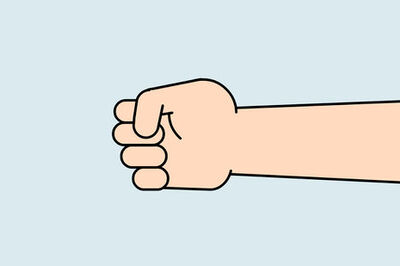

Comments
0 comment